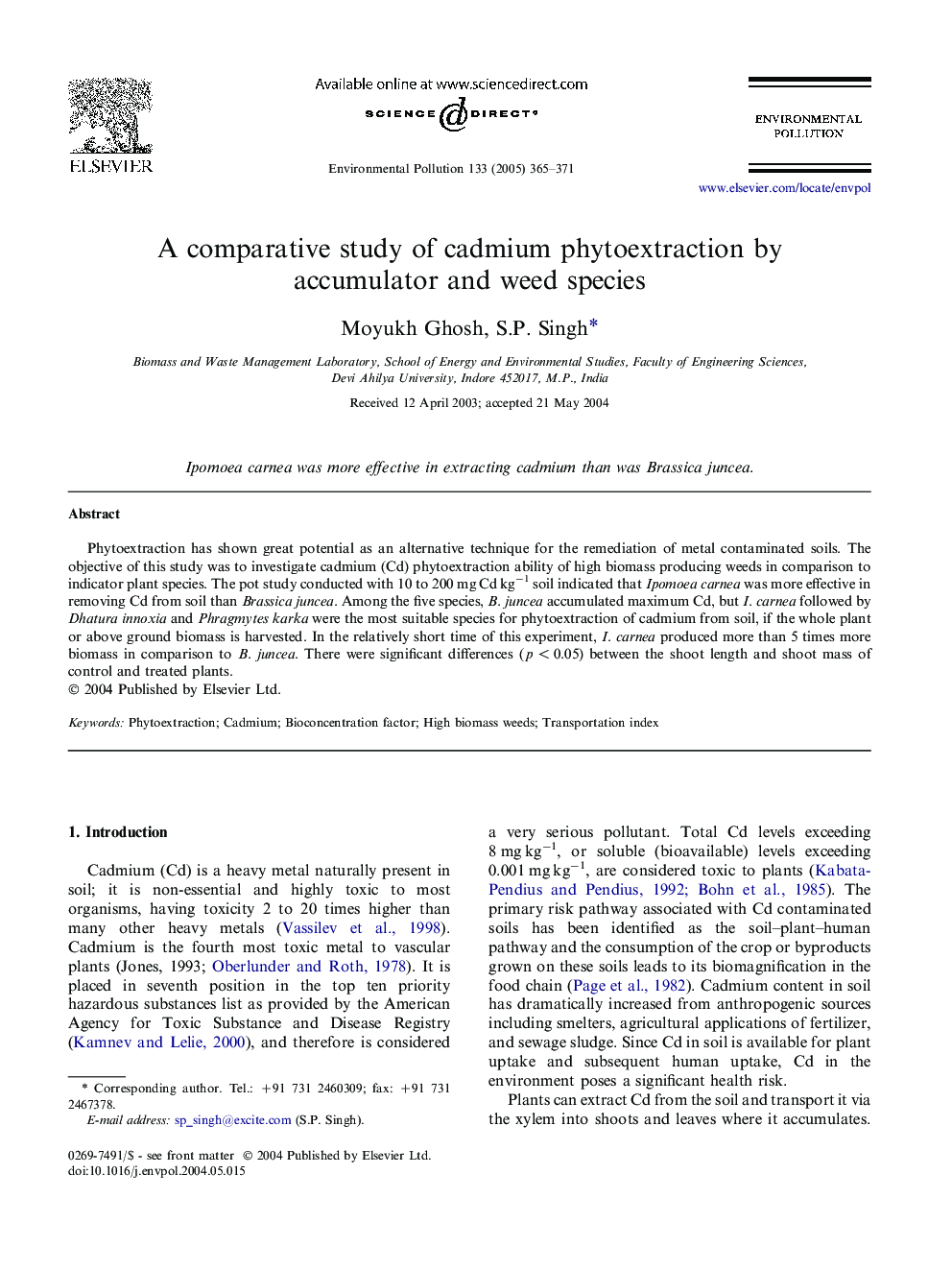| Article ID | Journal | Published Year | Pages | File Type |
|---|---|---|---|---|
| 9456505 | Environmental Pollution | 2005 | 7 Pages |
Abstract
Phytoextraction has shown great potential as an alternative technique for the remediation of metal contaminated soils. The objective of this study was to investigate cadmium (Cd) phytoextraction ability of high biomass producing weeds in comparison to indicator plant species. The pot study conducted with 10 to 200 mg Cd kgâ1 soil indicated that Ipomoea carnea was more effective in removing Cd from soil than Brassica juncea. Among the five species, B. juncea accumulated maximum Cd, but I. carnea followed by Dhatura innoxia and Phragmytes karka were the most suitable species for phytoextraction of cadmium from soil, if the whole plant or above ground biomass is harvested. In the relatively short time of this experiment, I. carnea produced more than 5 times more biomass in comparison to B. juncea. There were significant differences (p < 0.05) between the shoot length and shoot mass of control and treated plants.
Related Topics
Life Sciences
Environmental Science
Environmental Chemistry
Authors
Moyukh Ghosh, S.P. Singh,
